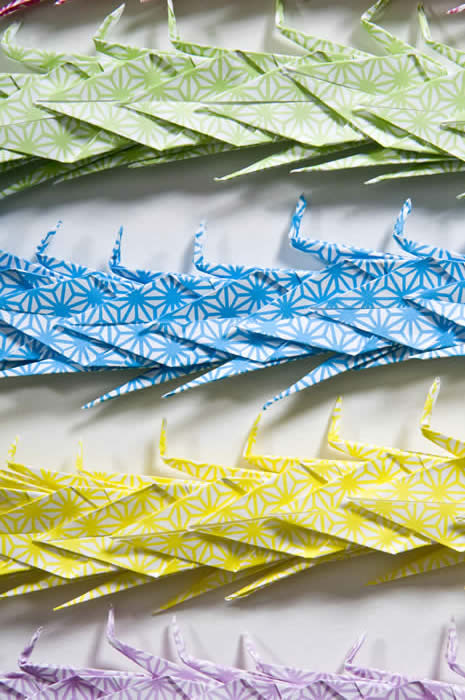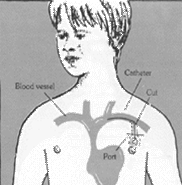Venous Access
Venous Access Device
A critical component of the overall care plan.
Children often have to experience 6 to 36 months of chemotherapy and need vascular access for:
- Administration of chemotherapy
- Frequent blood sampling
- Fluids and antibiotic support
- Parenteral nutrition
- Anesthetic sedation for procedures and radiation therapy (RT)
- Central venous catheters are defined as external or implantable.
Differences between external and implantable central venous catheters:
EXTERNAL CENTRAL VENOUS CATHETER |
IMPLANTABLE CENTRAL VENOUS CATHETER |
||
Peripherally Inserted Central Catheter (PICC) |
Cuffed Central Venous Catheter (CCVC) |
Implanted Venous Access Device (IVAD) |
|
|
|
|
|
Peripherally inserted line at the bedside or in interventional radiology, sterile technique and topical anesthetic. General anesthetic is avoided, but child may be sedated. Can use percutaneous or cut-down techniques. |
Catheter is composed of a silicone/silastic material making it flexible and durable. This catheter may have one, two or three lumens. Placed using either a cut-down or percutaneous Seldinger technique under general anesthesia. A dacron cuff is fixed to the catheter and the cuff is positioned subcutaneously 2-5 cm from the exit site where it incites a fibrotic reaction eventually adhering to adjacent tissue. This "anchor" reduces the risk of accidental dislodgement and may also act as a barrier to infection. |
The IVAD has two components: the port and the catheter. The port is smooth and rigid. The centre of the portal housing is covered by a self-sealing silicone septum. The catheter is securely attached to the port. It is made of silastic materials and has the same characteristics as the cuffed CVC (without the cuff). Placed using either a cut-down or Seldinger technique under general anesthesia. |
|
Usually inserted into the basilic and cephalic veins of the antecubital fossa. |
Catheter entrance site:
Catheter exit site usually on chest, occasionally on upper back in infants/toddlers. |
Catheter entrance site:
Diaphragm of the port is placed in a palpable position, usually on the chest, which allows ease of puncture. |
|
Catheter exit site maintained by weekly dressing changes. Line patency maintained by routine heparin lock/saline flushing |
Catheter exit site maintained by weekly dressing changes. Line patency maintained by routine heparin lock flushing. |
Dressing not required when port not accessed. Monthly flushing with heparin lock solution required when not in use. |
|
Catheter tip position confirmed by CXR |
Catheter tip position confirmed by CXR |
Catheter tip position confirmed by CXR |
|
Complications:
|
Complications: Most Common:
Rare:
|
Complications: Most Common:
Rare:
|
|
Advantages:
Disadvantages:
|
Advantages:
Disadvantages:
|
Advantages:
Disadvantages:
|
|




